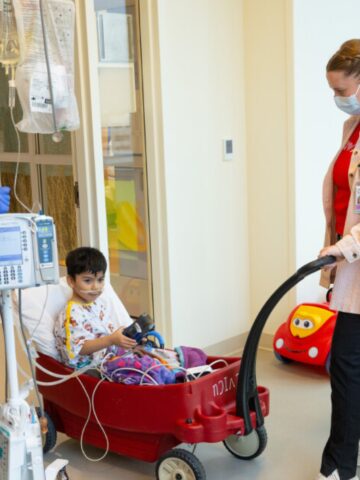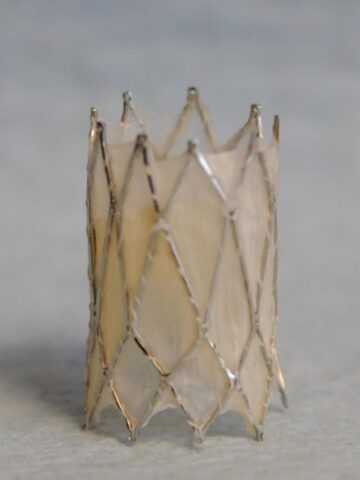Interventional pediatric cardiologist Dr. Sanjay Sinha is working on getting a lymphatic disorders program created at CHOC – a niche offering available at only a few pediatric healthcare centers worldwide but one becoming more in demand.
For kids with cardiac problems, such as congenital heart disease (CHD), disorders of the lymphatic systems often go hand in hand.
Such rare but serious conditions include chylopericardium, in which lymphatic fluid leaks into the space around the heart, and chylothorax, in which the clear fluid lymph formed in the digestive system pools in the chest cavity.
In December 2022, Dr. Sinha’s case for creating a lymphatic program at CHOC – the proposal is under review by a business development committee – got an additional boost after he took a trip to the land of tango, gauchos, and Lionel Messi.
Now, long-distance referral patients are coming to Dr. Sinha for treatment, while others are looking to him for guidance in establishing programs.
“Very few people and institutions have been able to successfully establish a lymphatic intervention program,” says Dr. Glen Van Arsdell, chief of congenital heart surgery at UCLA Health who also sees patients at CHOC.
“With Dr. Sinha’s expertise, enthusiasm, and drive, CHOC can establish itself as a leader and a potentially important referral center for lymphatic intervention – intervention that goes beyond just the cardiac population.”
An invitation
Dr. Alejandro Peirone, a leading cardiologist in South America who heard Dr. Sinha speak about lymphatic disorders at a recent international conference, invited him to come to Argentina to perform a procedure on a 15-year-old with both chylopericardium and chylothorax.
The teen had lost 30 pounds from being on a low-fat diet with no change in frequency of admissions at Hospital Privado Universitario de Córdoba, located in central Argentina about 435 miles northwest of the capital, Buenos Aires.
None of the cardiologists at the Córdoba hospital, including Dr. Peirone, who met Dr. Sinha in 2015 when Dr. Sinha was in training at UCLA Mattel Children’s Hospital, had the skills to perform the complex procedure.
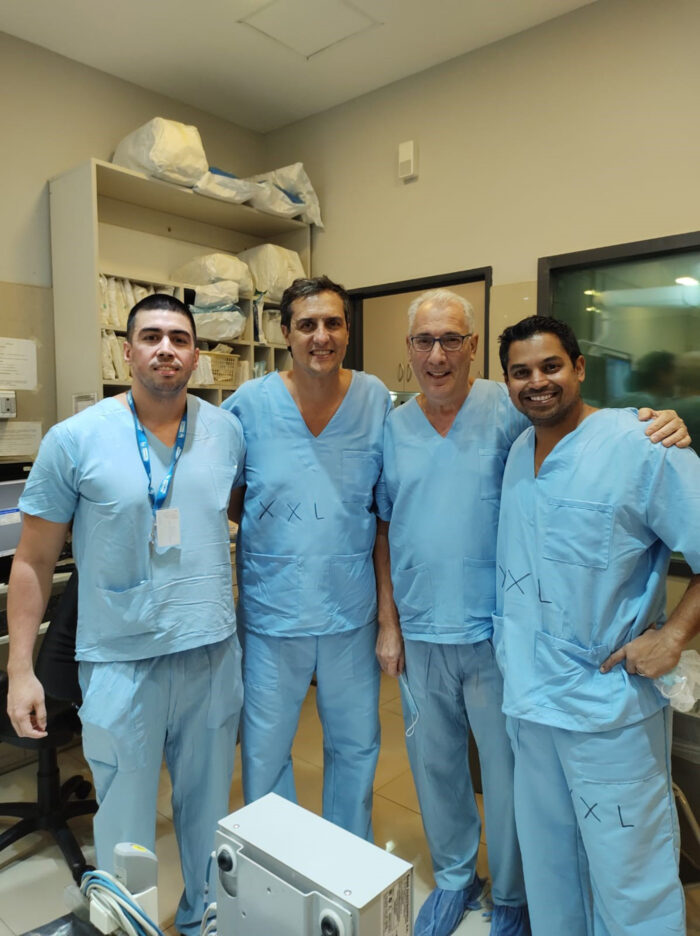
So Dr. Peirone arranged for the trip, which was funded by the Hospital Privado Universitario de Córdoba and the Live Like Noah Foundation.
And Dr. Sinha was happy to go.
“For me,” says Dr. Sinha, “the exciting part was getting to go and help a colleague develop a program – it was just a cool idea to get behind.”
Nine-hour procedure
During nine hours in the operating room, Dr. Sinha, working with Dr. Peirone as well as an interventional radiologist, was able to successfully treat the patient and teach a variety of techniques to the Argentinian team, who are hoping to convince their hospital to invest in developing a lymphatic program.
“We wanted to make sure we did a good job helping the patient,” adds Dr. Sinha, who is fluent in Spanish and who spoke in Spanish with his colleagues during the surgery.
“It would be hard to launch a program without a successful outcome. There were a little bit of butterflies, but we had a great team.”
Dr. Sinha’s brief visit to Argentina mostly was all business, although he did have time to indulge in his hobby of photography, shooting street scenes including ones of locals dancing.
‘Solid knowledge’
Dr. Sinha “showed a solid knowledge and a great expertise and clarified all our doubts,” Dr. Peirone says of the procedure. “He was very diligent and taught us how to approach the lymphatic system and the different alternatives of treatment.
“Although the case was very challenging, he was steadily persevering especially in the details and exactness. He showed a unique way of teaching, making things seem easy although they were very complex. He also shared a talk with the members of our program and discussed difficult cases suggesting an appropriate diagnosis and possible therapeutic options.
“It was a real privilege.”
Dr. Peirone adds that Dr. Sinha’s visit helped his team realize how important it was to create a program to treat lymphatic problems.
“He showed us the way to develop such a team,” Dr. Peirone says. “He taught us the tools we need to be successful. From now on, patients in Córdoba have an option and better hope dealing with this serious disease.”
Interdisciplinary effort
Dr. Sinha has been co-director of the UCLA Congenital Lymphatic Intervention Program since it formed in 2016. The following year, he joined CHOC — where he now devotes 80 percent of his time.
His plan is to combine the lymphatic disorders program at UCLA, which treats about 60 patients a year, with a new one at CHOC.
Such an effort will require an interdisciplinary team of interventional cardiologists and specialists from imaging, anesthesia, ICU, gastroenterology, pulmonology, and lymphatic microsurgery.
Decade-old discipline
Lymphatic disorder intervention took off about a decade ago with advances in imaging, Dr. Sinha explains.
“In order to do these procedures, many times you first need to do a specific MRI called DCMRL, for dynamic contrast enhanced magnetic resonance lymphangiography,” Dr. Sinha notes.
The lymphatic system, part of the immune system, is a network of tissues, vessels and organs that have many functions, including protecting the body from illness-causing invaders, maintaining body fluid levels, absorbing digestive tract fats, and removing cellular waste.
When things go wrong with the lymphatic system, serious medical procedures sometimes are necessary.
Take, for example, the condition PLE, for protein-losing enteropathy, one of the main diseases the Live Like Noah Foundation helps families cope with.
In the past, even if the heart was working fine, patients with PLE typically underwent a heart transplant.
Now, with a better understanding of lymphatic disorders, cardiologists like Dr. Sinha are able to avoid heart transplants by treating the underlying lymphatic condition using a variety of minimally invasive treatment options.
Doing ‘very well’
As of mid-April 2023, the boy in Argentina treated by Dr. Sinha and his team in Córdoba was doing “very well,” says Dr. Peirone.
“He recovered uneventfully and was discharged after 36 hours of staying in the hospital,” Dr. Peirone says. “After two months, he is not getting back excessive fluid in the pericardium or in the pleura.”
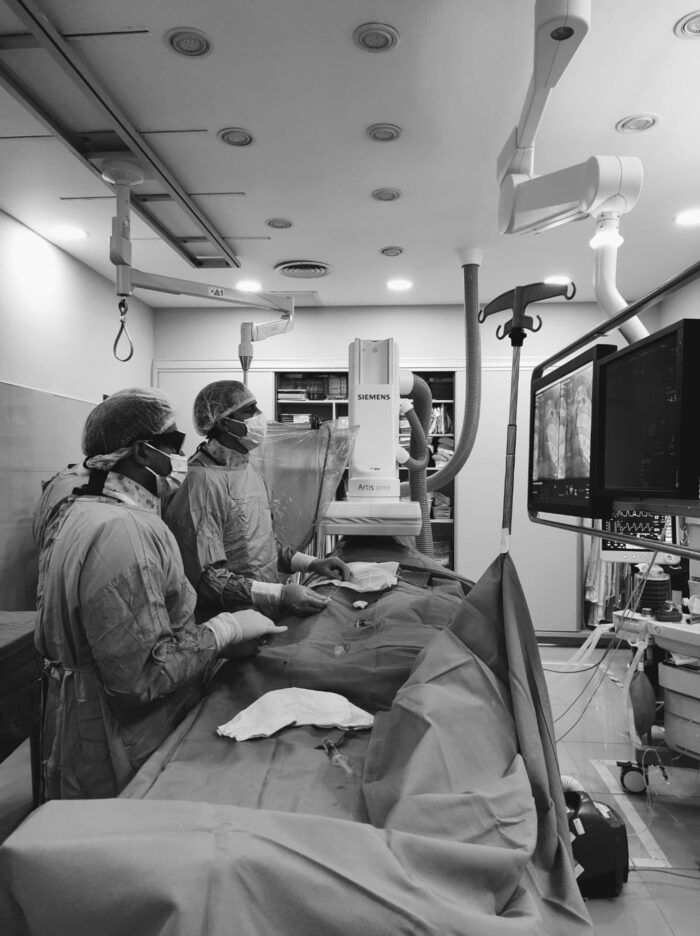
Dr. Sinha performed his first intervention on a child with a lymphatic disorder at CHOC three years ago because the patient was too sick to be sent to UCLA.
He is hoping treating such kids at CHOC with lymphatic disorders soon will become routine.
“We’re learning more how to treat and manage these patients and are realizing that a lot of CHD patients have baseline abnormal lymphatic problems,” Dr. Sinha says.
Because of Dr. Sinha’s demonstrated success with lymphatic interventions, he is being invited to speak nationally and internationally on the topic.
Dr. Peirone is organizing the 49th National Pediatric Cardiology Congress with the Argentinian Society of Cardiology. He has asked Dr. Sinha to be the main speaker at the event, which will be held in Buenos Aires in October.
Dr. Gira Morchi, division chief of pediatric cardiology at CHOC, congratulated Dr. Sinha on his successful procedure in Argentina.
“Cases like these will certainly help justify the creation of a program at CHOC,” Dr. Morchi says. “With his reputation, we are well on the way to becoming a worldwide destination center for these cases.”
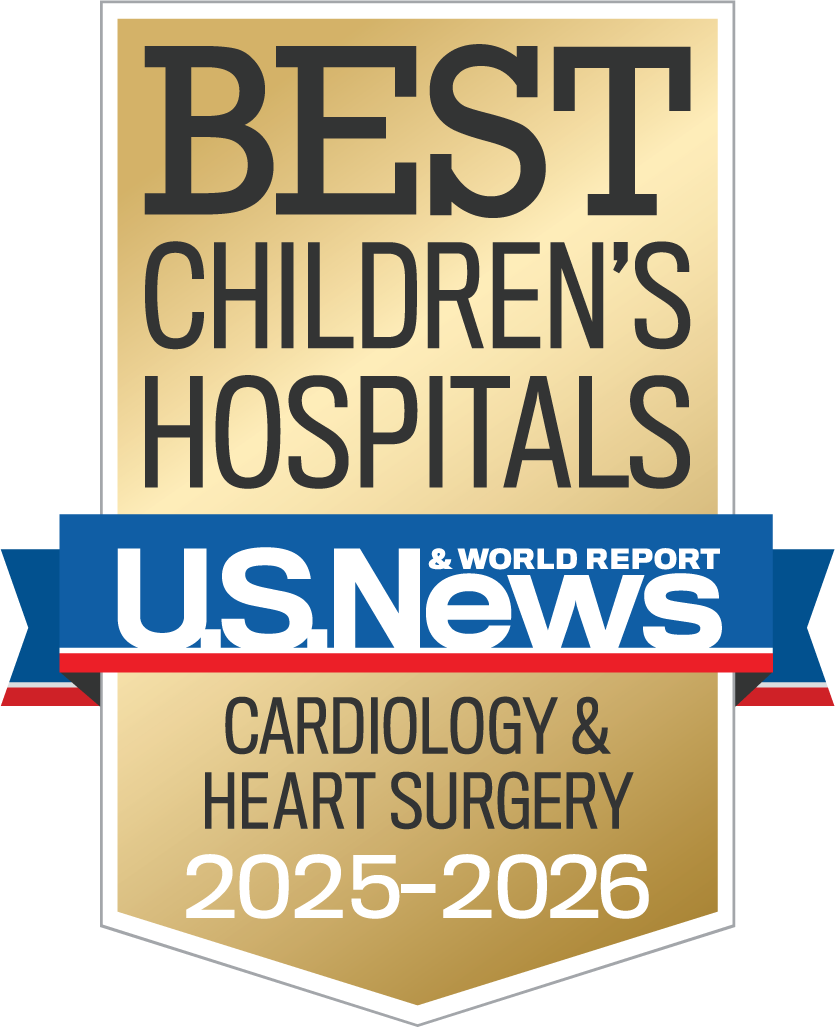
CHOC and UCLA Health together have been ranked among the top children’s hospitals in the nation for Cardiology & Heart Surgery by U.S. News & World Report.


